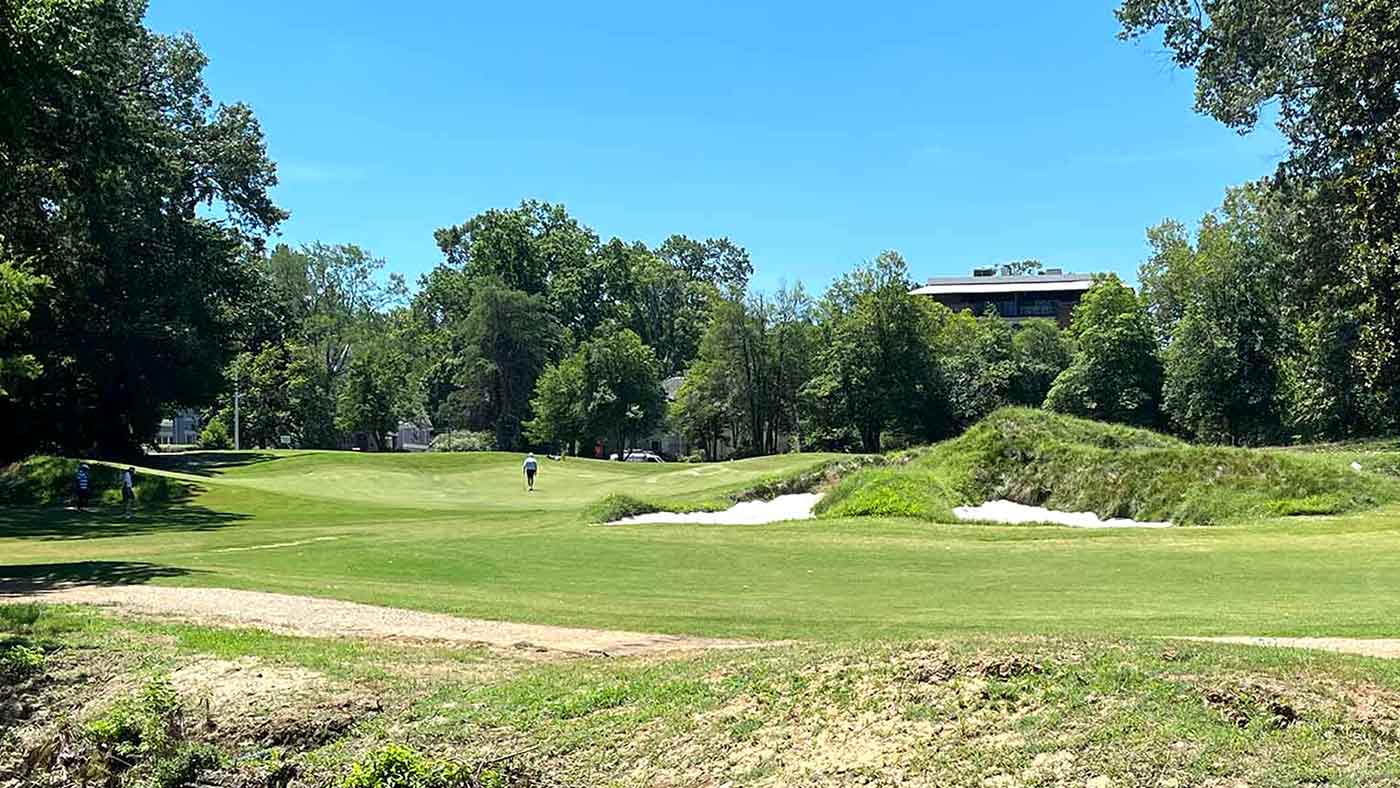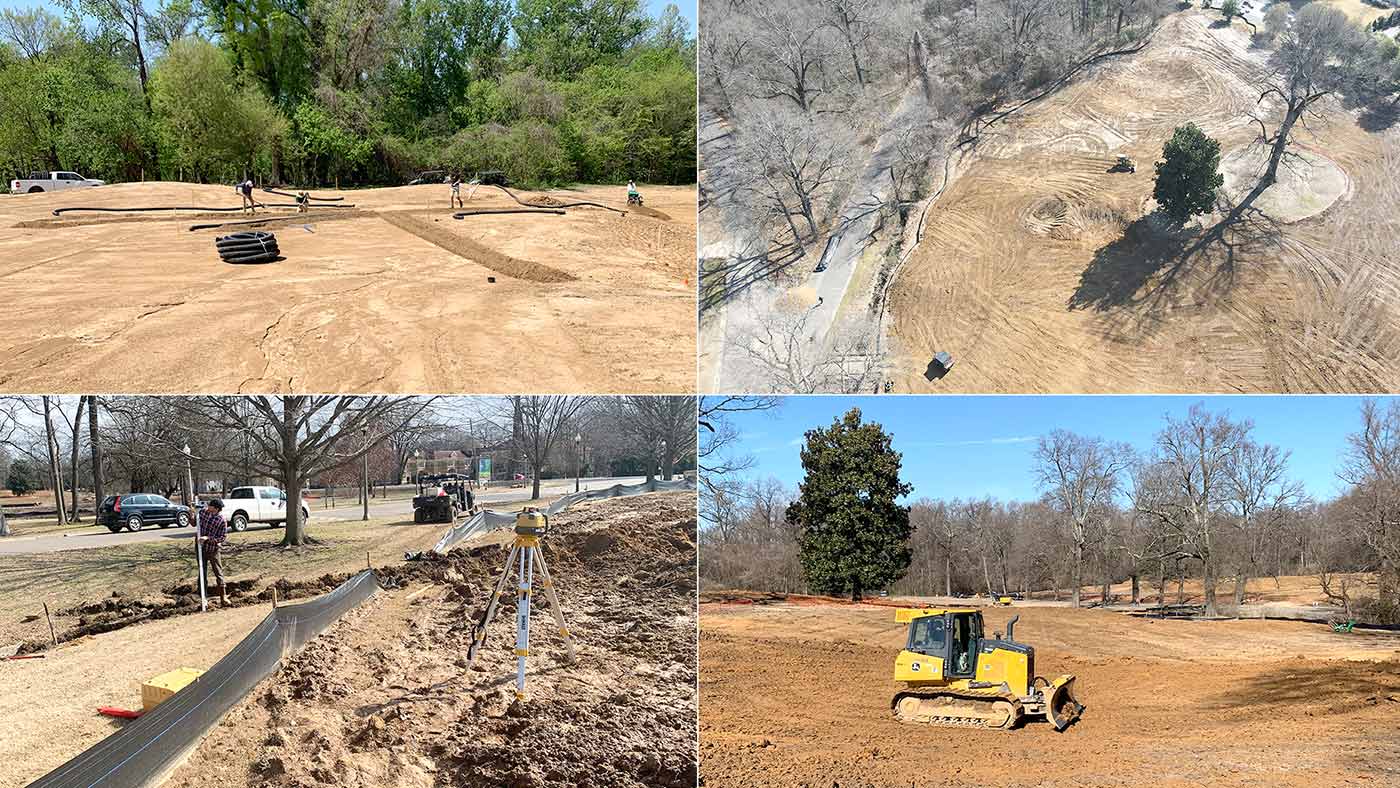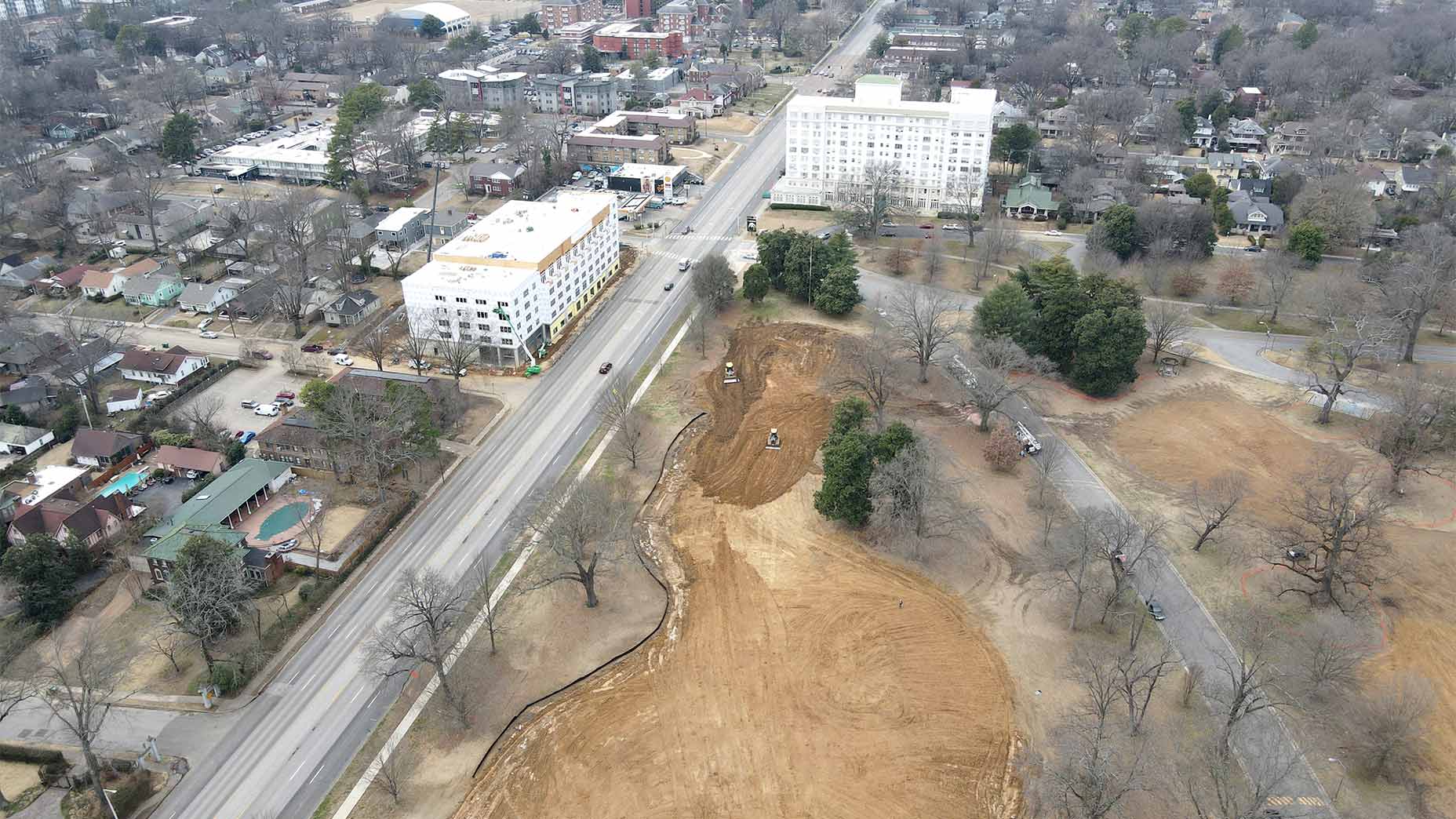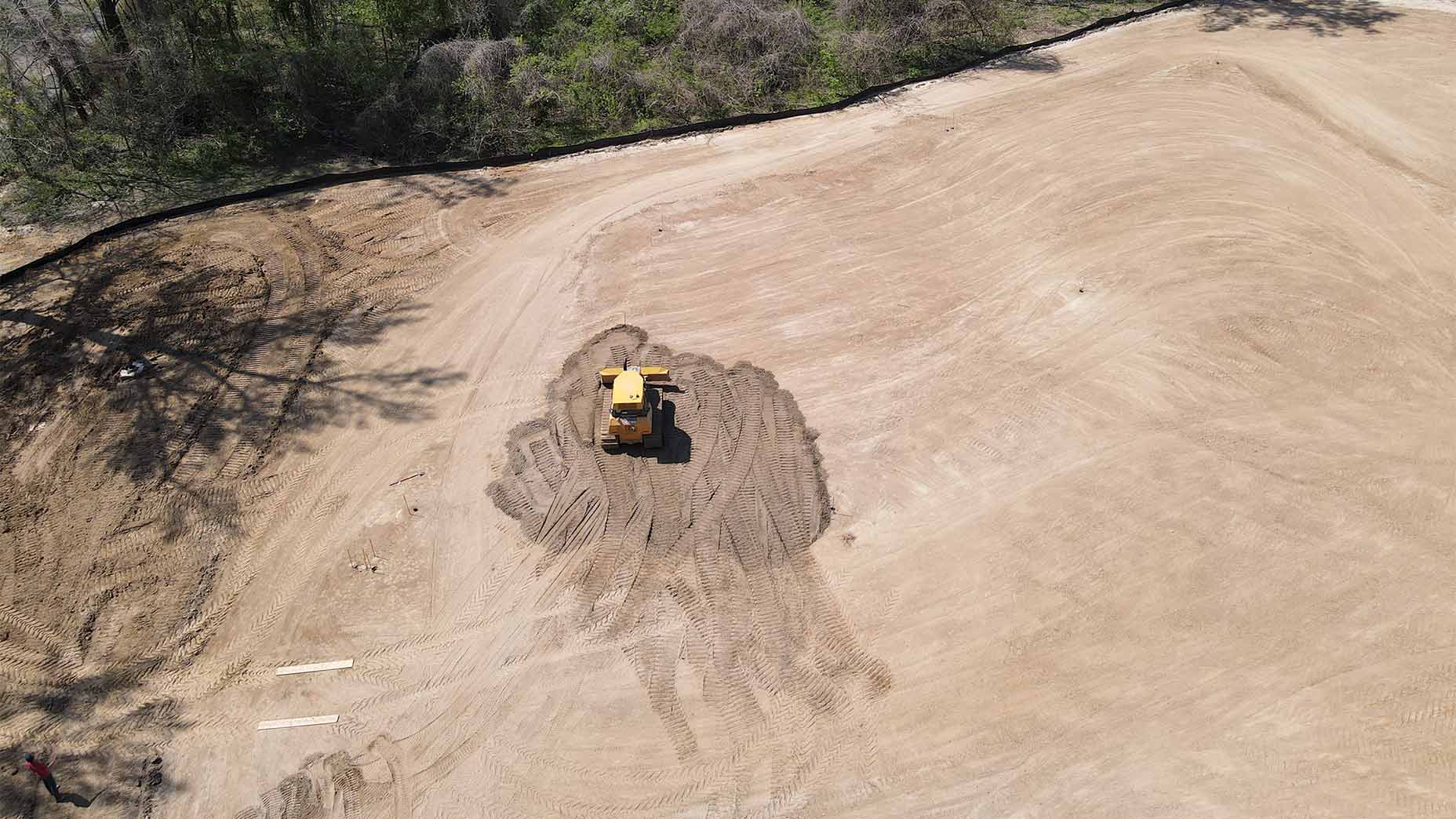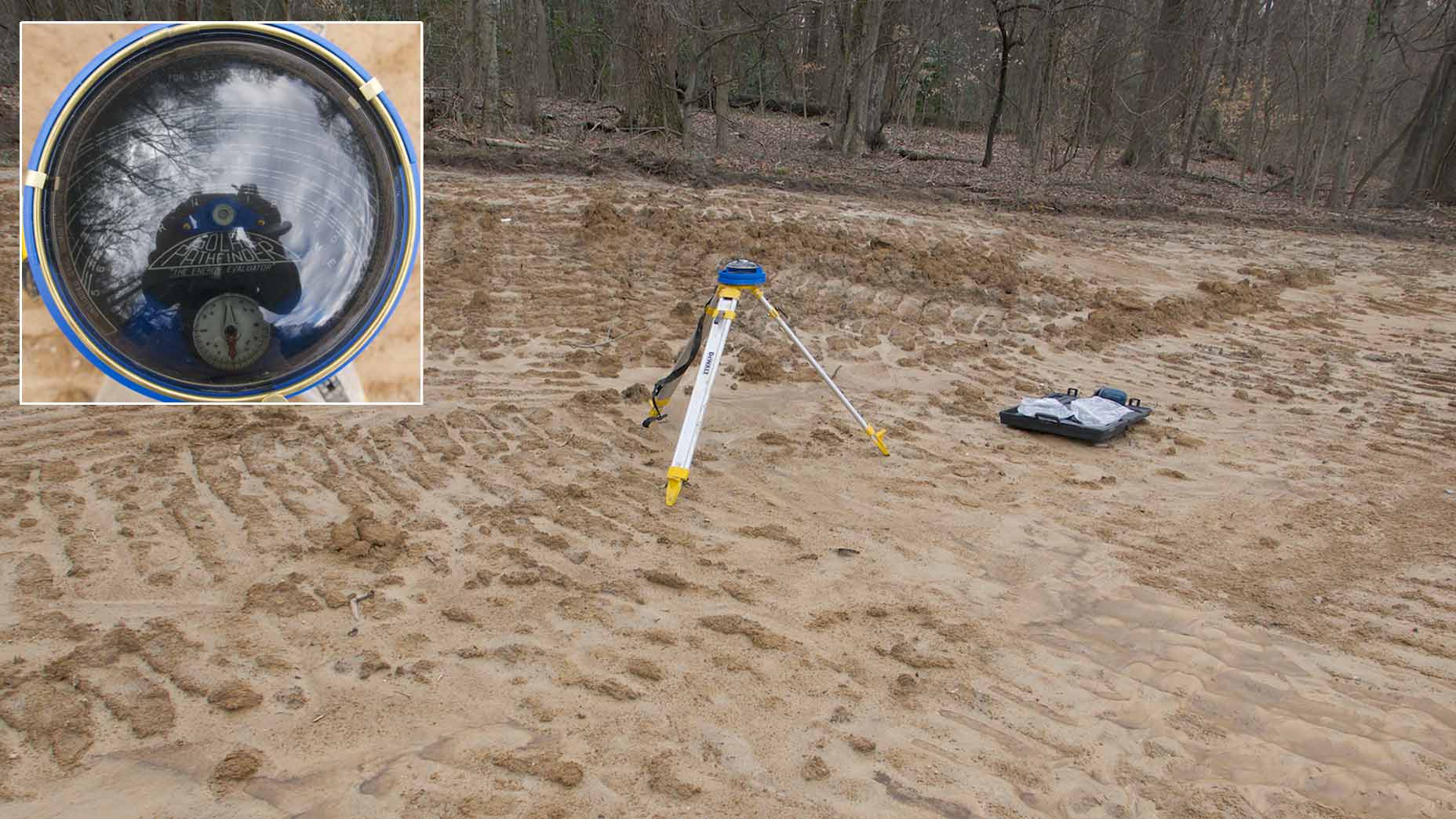Last year, I spent six months working for King-Collins Golf Course Design and Construction team — and chronicling it all — as they rebuilt the nine-hole golf course within Overton Park in Memphis, Tenn. The experience, while brutally difficult at the time, becomes a fonder memory to me as time passes. To think I was helping to build something that would have a lasting legacy for a community and bring more kids into the game, while cliché, was one of the only things that got me up before sunrise each morning.
So when the course was set to finally open on June 25, I flew back to see Rob Collins, several other locals vital to the project’s success, and to play the course for myself.
Unlike Collins, this was my first (and almost certainly, only) course opening. I was curious if they all felt the same.
“Each course, each baby is different, just like my human babies,” Collins said laughing. Each one has its own unique birthing process and that makes it rewarding and fulfilling for different reasons.”
I happen to be an only child, maybe that’s why I don’t feel the need to do this whole thing again. Each day was an absolute grind, and the fairytale I had of riding machines and shaping greens all day long was far from the truth. It was hard.
Explaining The Links at Overton Park, as it was previously known, before the renovation is difficult without sounding harsh.
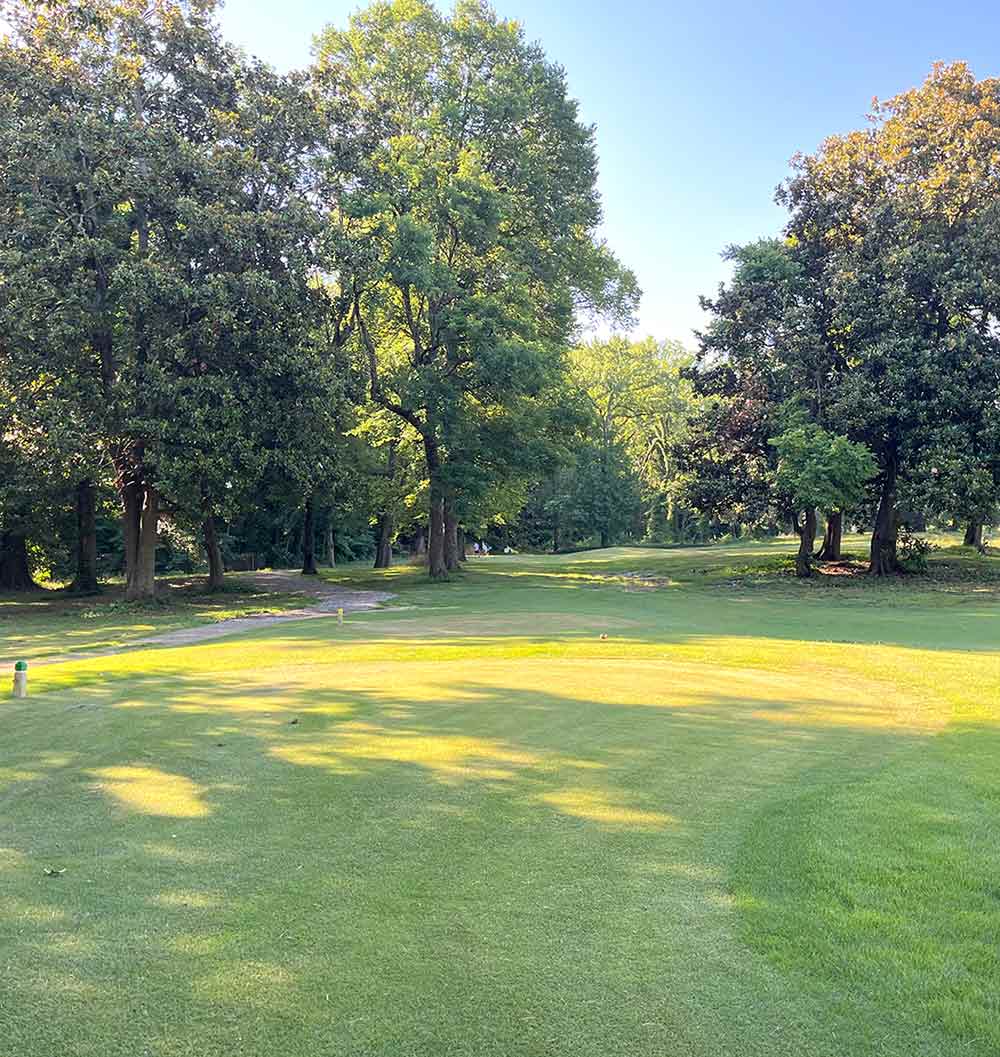
“I would describe it as a worn-out golf course that was past its time,” Collins said, politically. “It had gone downhill maintenance-wise and was not in good shape.”
But even if the maintenance had stayed top-notch, the course still had its issues.
“There were just a bunch of really small circular greens, really bad conditioning, really bad drainage problems,” Collins said. “All sorts of things that just didn’t make a person want to come out there and play golf.”
The course was built in 1906, so it came as no surprise that it was lacking in some categories. When I walked the course before we tore the place to shreds, I couldn’t imagine wanting to play there once, let alone on a consistent basis. There was no intrigue, zero interesting shots (many were damn near impossible), and no flow to the place. It was, in my opinion, in desperate need of help.
After the project was finished, Collins talked a lot about gratitude. To be honest, I was far from the ideal employee. This job was more than I had bargained for. But when I talked to Collins a few days after playing the course for the first time, I told him he was right, that I did feel a sense of gratitude for the place.
18 things I learned while helping build a golf course this summerBy: Desi Isaacson
At this point in my life, it’s probably the best thing I’ve ever been a part of, and the most selfless. Most of the people on the team who built it will never see the finished project, will never get to play the greens they shaped, but that’s what makes it all worth it.
Collins’ partner, Tad King, was not there for the opening. This came as no surprise, as he tends to stay out of the spotlight and let Collins do the talking. King is a little more construction focused while Collins is design, but they do each step together. I thought a lot about how well they balance one another and how much trust there is in their relationship as I made my way around the course. It was always impressive how trusting they were throughout this process.
Part of what made this project so special, and at times difficult, was that we were building a municipal course, which are not always the most well-supported projects, though there have been several awesome endeavors completed recently like the Winter Park 9, the Charleston Muni, and Memorial Park in Houston.
There was also some funding that didn’t come directly from the city. The private side of the equation at Overton Park originally starred George Cates. Cates, a recognized name all over Memphis, was originally a real estate entrepreneur who became a Memphis civic leader and benefactor. Renovating the course at Overton Park was long a dream of his, but he was tragically killed before the course could open. He died at age 83 when the plane he was piloting crashed.
The other champion of the renovation was Parks Dixon. Parks had no official title, though his role as best described in his own words was “unofficial and unprepared volunteer project manager.” Cates initially asked him to be a liaison of sorts between King-Collins and any group that was involved. When Cates passed away, Parks became the Overton Park 9 co-chair along with Gary Shorb. Despite all the hard-work he was putting in behind the scenes, Parks still always found the time to come chat with those of us on the construction crew, often bringing us donuts or barbecue. He was a familiar face in a park full of strangers.

“After George’s death, Parks’ ability to pick up the pieces and see this thing forward was heroic,” Collins said. “If it wasn’t for Parks, who knows what would’ve happened.”
There are a lot of reasons I’m happy to see this course come to fruition, not the least of which was to see the smile on Parks’ face as he hit the opening tee shot. He had the initial idea to bring in King-Collins after loving his experience at their cult favorite, Sweetens Cove outside Chattanooga. He also did a wonderful job of convincing them to take on his project across the state.
The setting for The Overton Park 9 is far from normal. The course is broken up, weaving its way around trails, roads, museums, dog parks, runners, dog-walkers, and a protected old growth forest. At its longest the course tips out around 2,300 yards. Though not wildly dramatic, the land for the course has a good bit of movement, accentuated, but not overdone by the shaping team. Yet the real intrigue comes in the enlarged and redesigned greens. Each one dictates the hole’s strategy and has diverse hole locations. They are undoubtedly what will keep people coming back.
Collins told me about the first time he played Pinehurst No. 3, which plays around 5,000 yards, and how it was so fun and made him want to try different shots.
“I was hoping that Overton Park would have a similar feel where it just makes you want to go play golf,” he said. “If I lived in Memphis, I would want to play there every day. I want guys sitting at their desk at 4 just counting every second off the clock.”
The objective was never to turn this into a championship course, to stretch it out, or make it more challenging. We were looking for more intrigue and repeated interest, without doing too much.
“I think it’s exactly what it should be,” Collins said. “It’s got nine unique, interesting, fun green complexes. It’s not overbearing in any way at all.”
We discussed specifically how perfect this course was for kids.
As evidenced by the recent Overton Park Junior Open, kids will be at the core of this place. Not only is OP9 extremely affordable for any golfer ($10 for non-residents), it’s free for juniors under 18. Upon learning of my involvement in the project, local after local expressed their love of Overton Park and recalled learning to play the game there.

To a large extent, this place was built for kids.
I truly cannot imagine a better place to learn the game. Since it’s on a small scale, many holes will be reachable in two for the younger golfer, with bunkers and greens set in perfect positions for milestones. The first time clearing a bunker off the tee or finding a green from a perfectly struck drive will be remembered for years. There is enough variety that it will make you practice every part of your game. And yet each green is exciting, an approach you cannot wait to try. If the love is sparked here, there is still enough difficulty, variety, and challenge to keep the low handicap interested round after round.
We talked through some of the most fun shots out there, Collins pointing out a downhill drive over a drainage canal on 7, the drive parallel to Poplar Avenue on 8, curling a drive around a large magnolia guarding the Art Museum on 9.
The course will continue to get better, too. One way I think this will happen is with a growing appreciation for some of the more subtle holes. The shot through the shoot of trees on 2 will get a lot of early fans, as will the large sideways Biarritz on 4, and the massive Punchbowl on 5. It’s not what you expect when you pull up to a muni with a tiny price tag.
6 things you learn when building a golf course in the middle of a cityBy: Desi Isaacson
“I know you have a soft spot in your heart for number 6,” Collins says, remembering several conversations we had standing just a few yards short of the 6 green throughout construction.
From the moment I started to understand the approach shot, I was in love. Listed on the card as a 215-yard par-3.5 (yes, we don’t care about having scorecard official half par holes around here) the 6th plays over a hill that runs down into the green. Shapers, including Collins, spent hours making sure the transition from the fairway to the front of the green was seamless, perfect for landing balls short and having them run into the middle of the green.
“Hitting a low line-drive, knock-down iron over that hill and watching it disappear over the horizon line, [there is] that little bit of trepidation you feel, then the hole reveals itself as you come over the hill,” Collins says. “Those kinds of fun scenarios are what I hoped you would see and what it would be like. And then to get to experience that was awesome.”
The sixth won’t jump out at you visually, but after some repeated play, I think it might end up being a favorite of many.
I asked Collins what he was thinking about as he went around the course he built for the first time. What memories arose in him?
“I specifically remember me and you working on the approach to No. 1 a lot, I thought about that,” he said. “I just love the way that green ties in.”

I thought about this too as I played the 1st hole. I remembered Collins asking me for my input and opinions, where should we draw the orange lines denoting forever the edges of the green? Was the edging of the bunker the way we wanted it? Was the transition from the fairway into the front of the green perfect? We were out there for hours in the burning Memphis sun, so it should have come as no surprise that Collins remembered that moment, but it still caught me off guard. I mean, Collins is a borderline famous, cult figure in golf. I guess I had assumed his day with me would blend into a life of shaping greens and creating golf for others.
But what I really remember from that hot day on the 1st green was how enthusiastic Collins was. He jumped in a skid steer and rode it faster than anyone, the machine jerking him to-and-fro as the artist sculpted. He would jump out and look at his handy work from a few angles, I’d sheepishly point to a spot he might want to fix (like I knew), and he would jump back in. He would swear a lot, but always positively, jumping out and yelling “F— yeah, that looks sweet!” or “Oh man, this is gonna be f—— awesome!”
At one point he told me he wanted the front of the green to meld into the fairway like it was straight out of a Salvador Dali painting. Only moments later he was comparing the green to Shinnecock. It made me laugh and smile, because he was being serious, and he believed it. And Collins and King made you believe it, too.
When I tapped in on the 9th hole, Collins and Dixon were there to greet me. I hugged and congratulated each of them. I told them thank you. There were beers from a local brewery designed specifically for the OP9, and burgers from a local favorite, Hueys. Those who had finished their round milled about, chatting about how well it turned out and our favorite shots. We watched others, including juniors, tee off for the first time on their new adventure. I was jealous they would have this place to grow up on, and happy I was able to help build it for them.
